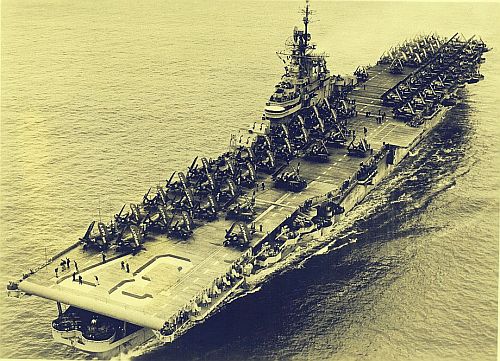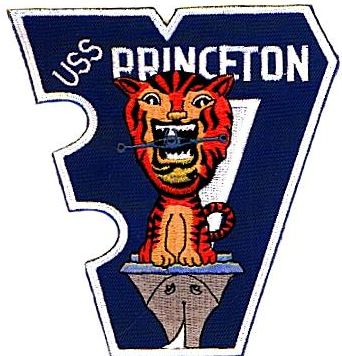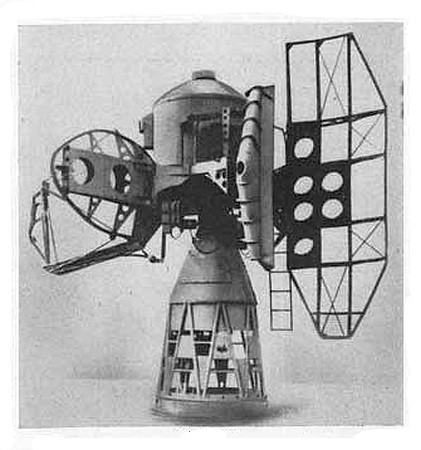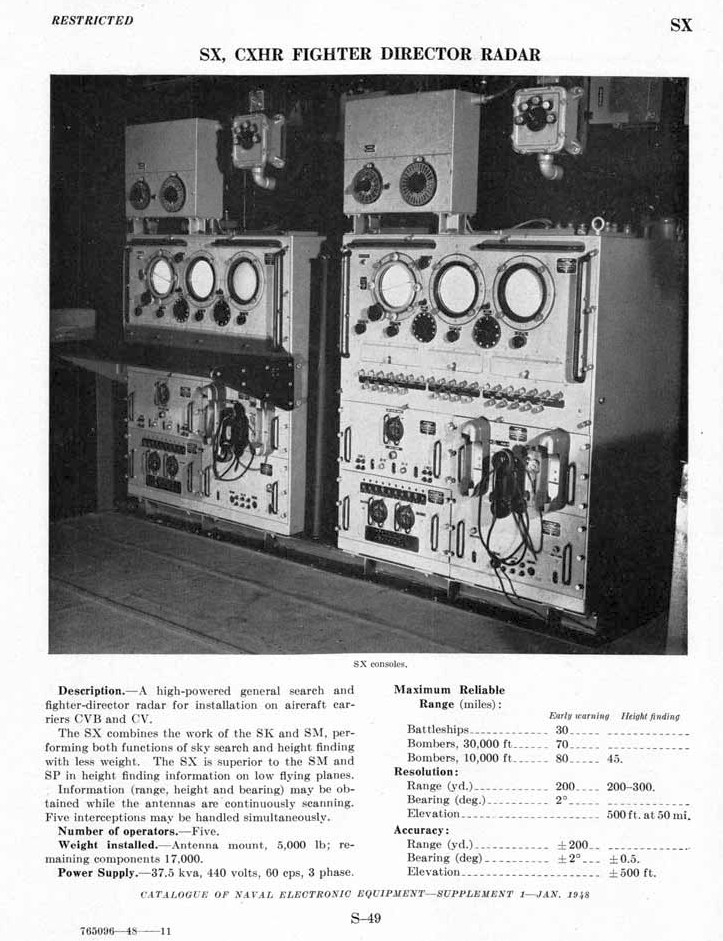

Dr. J. Allen Hynek summarized two intelligence reports
involving a long series of military UFO radar sightings
by the US Navy carriers USS Philippine Sea and
USS Princeton in his book, THE HYNEK UFO REPORT
starting on page 128. The book is available online at the
Center for UFO Studies (CUFOS) at
Hynek considered two intelligence reports about these incidents - one covering the period April-May 1951 and the other February 2, 1952. However, according to an operations officer assigned to the USS Philippine Sea these UFO sightings continued for some time after the original reports indicated.
We will consider the 1951 and 1952 incidents separately. Hynek obtained his information from the data supplied by Wallace Bush and transmitted to ATIC by the Far East Air Force Air Technical Intelligence Liaison Officer (ATILO) in Intelligence Report 29-52.
 |
 |
One year prior to the radar-visual UFO sighting by the aircraft carrier Philippine Sea, the ship was involved in a double radar UFO sighting with the carrier USS Princeton off the east coast of Korea. The Princeton had made radar contact with several high-speed "Unknowns" during April and May of 1951, prior to the double contact involving radar aboard the Philippine Sea. The speeds of the "Unknowns" were estimated at up to 1,200 MPH.
Excerpts from a letter to the Chief of Naval Operations from Commander Naval Forces, Far East, dated September 11, 1951, and classified SECRET, contained this report:
The observation of rapidly moving targets on the PPI scope of the SX radar on the USS Princeton CV-37 has been reported by Lt. H.W. White, a CIC watch officer on the staff of Commander, Carrier Division 5. The targets were observed several times while operating with Task Force 77 during April and May of 1951.
On one occasion the targets were observed by two ships simultaneously. The same targets were held by both the USS Princeton and USS Philippine Sea on their SX radars. The ships were approximately 4,000 yards apart at this time. The tracks made by the contact on the radar of the Philippine Sea were the same as those on the USS Princeton.

The targets were always 22° wide and sharply defined. The presentation was exceedingly bright in comparison with normal air and surface contacts. Appearance of the target never varied. The SC radar was operating satisfactorily both before and after each incident. Very little sea return was observed.
Although previous observations of high-velocity targets had been reported by aircraft, this report was the first reported shipboard occurrence of this phenomena. This report is considered of particular interest in that the contacts were observed by two different radars at the same time, thereby reducing the probability that malfunctioning of the radar was the cause of the phenomena.

Martin Shough analyzed this case based on the information supplied by Hynek above. One is very tempted to conclude that radar interference was the cause of the reported target. Shough examines this possibility below.
|
||||||||||||||||||
PRECIS: Letter from Commander Naval Forces, Far East, to Chief of Naval Operations, SECRET, September 11 1951:
The observation of rapidly moving targets on the PPI scope of the SX radar on the USS Princeton CV-37 has been reported by Lt. H. W. White, a CIC [Combat Intelligence/Information Center] watch officer on the staff of Commander, Carrier Division 5. The targets were observed several times while operating with Task Force 77 during April and May of 1951.
On one occasion the targets were observed by two ships simultaneously. The same targets were held by both the USS Princeton and USS Philippine Sea on their SX radars. The ships were approximately 4,000 yards apart at this time. The tracks made by the contact on the radar of the Philippine Sea were the same as those on the USS Princeton. The targets were always 22 degrees wide and sharply defined. The presentation was exceedingly bright in comparison with normal air and surface contacts. Appearance of the targets never varied.
The SX radar was operating satisfactorily both before and after each incident. Very little sea return was observed.
Although previous observations of high-velocity targets had been reported by aircraft, this report was the first reported shipboard occurrence of this phenomena [sic]. This report is considered of particular interest in that the contacts were observed by two different radars at the same time, thereby reducing the probability that malfunctioning of the radar was the cause of the phenomena.
NOTES: There are three circumstances which might on the face of it suggest an RFI cause for this incident:
a) similar effects were observed on the scopes of two identical radar sets no more than 2¼ miles apart; b) scope presentation was "exceedingly bright" compared with the normal echoes of aircraft or ships; c) the statement that "the targets were always 22 degrees wide" suggests a broad arc or smudge very unlike a point target. Two such radars on similar frequencies might detect and display one another's output pulses as false echoes which could well appear abnormally bright.
However, it seems odd to describe such extensive echoes as "sharply defined", and if they were "always 22 degrees wide" and "rapidly moving" at "high velocity" yet "never varying" in appearance, they can only have been moving in a constant radius - that is, circling the scope centre, which one would think a very pertinent circumstance worthy of mention. Indeed, careful reading of the report suggests that "22 degrees wide" in fact means "22 degrees apart", i.e., two "sharply defined" targets whose "tracks" on the scope(s) maintained a separation of 22 degrees at "high velocity" and whose "appearance [presentation] never varied". In other words, they were probably normal point targets except for their speed and very bright presentation.
Spot brightness is not of itself diagnostic of RFI, and 2 discrete spots simulating scanned point targets would be a very atypical symptom of RFI, requiring abnormally discrete pulse trains synchronized to the antenna scan rate. Also, the report states: "The tracks made [on both radars] were the same", whereas one would expect such a mutual exchange of signals, in the simplest case, to occur preferentially at reciprocal antenna azimuths, displaying in geographically opposite scope sectors. Detection does not have to occur at the peak gain of the antenna, but in a case where signals are strong enough to be symmetrically exchanged between synchronously rotating antennae and displayed via sidelobe gain, it can be shown that the ratio of transmitted power to receiver gain will remain approximately unity throughout 360 degrees. This means that the received signal would not bear the necessary relation to scan rate and would not simulate a point target. Finally, mutual interference is a fundamental problem to be minimised or eliminated in the design and operation of any radar, more especially a mobile military radar, and at the simplest level is avoided by frequency tuning. Its occurrence for a brief period, with normal operation before and after, might imply abnormal refractivity which temporarily allowed very strong out-of-band signals to generate "echoes" by their secondary intermodulation products; however, the report notes that "very little sea return was observed", suggesting that the conditions for AP did not prevail.
Partial inversion reflection is an unattractive hypothesis given targets whose "high velocity" was their essentially anomalous feature. Meteor-wake ionization might be detected at paths tangential to the radars, and displayed at spuriously low speeds by multiple-trip, but two simultaneous, parallel meteors are presumably very improbable, and signal strengths would not be high enough for "exceedingly bright" echoes. "Ghost" reflections between an (unreported) aircraft and either a surface target or another aircraft are highly improbable, as the same reflection geometry would have to obtain for both radars 12,000' apart.
Notwithstanding the above arguments, it has to be said that the nature of the radar targets is poorly described and some unusual effect of radio frequency interference should not be ruled out as a cause of such high speed targets. In the absence of exact information as to target trajectories, scattering from rapid waves on tropospheric layers is presumably also a possibility, although not particularly attractive given the maintained 22-degree separation of "bright", "sharply defined" point targets of unvarying presentation. The case would appear to merit further study.
STATUS: Insufficient information
|
|
|
|
|